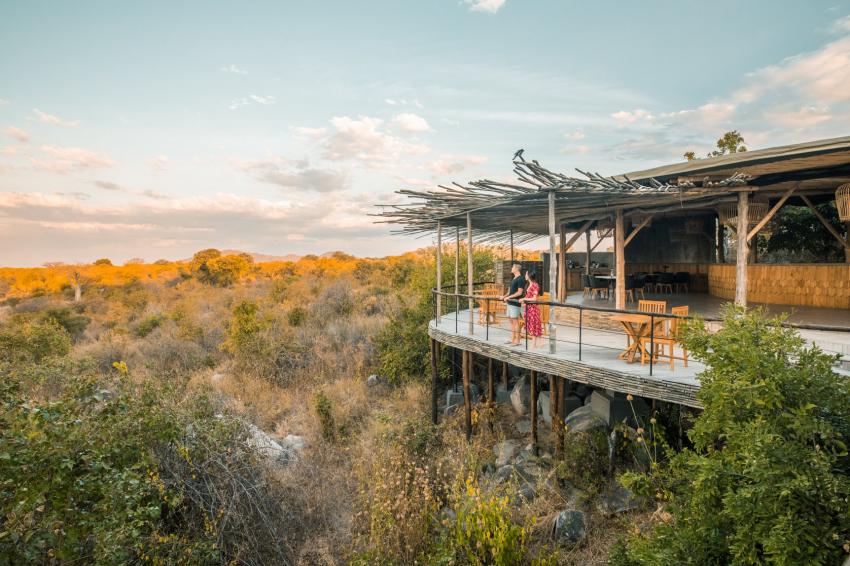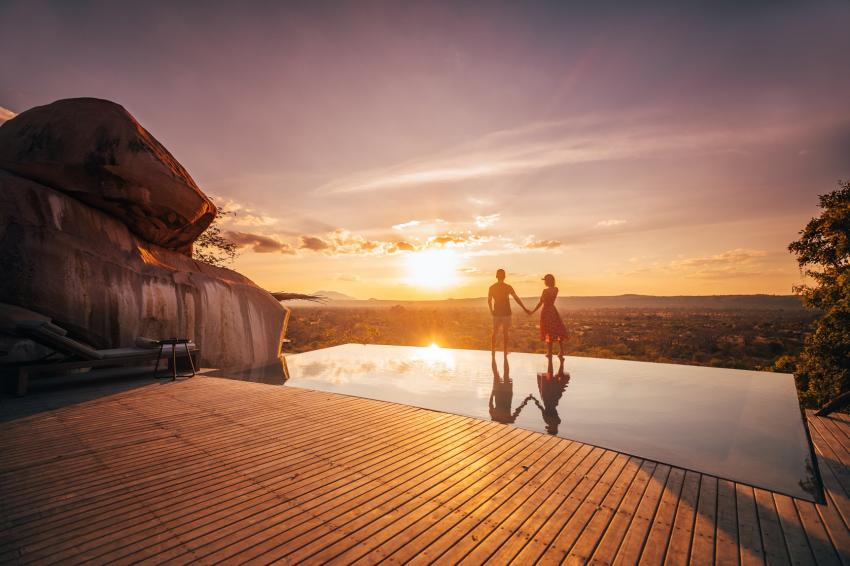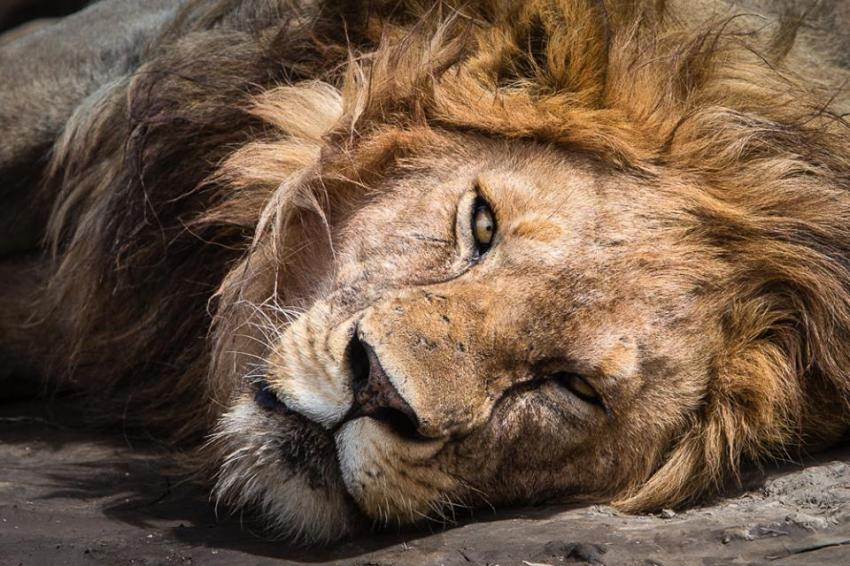A guide to Tanzania’s Southern Circuit
Tanzania’s Northern Circuit features a number of go-to parks for first time visitors to the country, such as the Serengeti National Park and the Ngorongoro Conservation Area. But the lesser-known (and little-visited) Southern Circuit holds some gems of its own that shouldn’t be overlooked.
With remote landscapes, staggering wildlife diversity and far fewer crowds, the parks and reserves of the Southern Circuit are what adventures are made of. Picture yourself trekking through pristine rainforest to spot wild clans of chimpanzees or game driving with not another vehicle in sight across the acacia-dotted savannah.
The Southern Circuit offers all that and more, ensuring one of the best safaris in Africa. So in this guide, we’ll introduce some of the parks you can visit on the Southern Circuit and the best time to go.
Top spots to visit on the Southern Circuit

Selous Game Reserve
Sprawling across 50,000 square kilometres, the Selous Game Reserve is one of the largest of its kind in Africa and a designated UNESCO World Heritage Site. It’s home to an incredible wildlife diversity that includes huge numbers of buffalos, hippos and around 4,000 lions, as well as healthy populations of wildebeest, zebra and giraffe.

More than 440 bird species have also been recorded in the Selous Game Reserve, including African skimmers and giant kingfishers, as well as migratory Malagasy squacco herons and trumpeter hornbills. Most of the wildlife and bird spotting centres around the Rufiji River but the reserve also encompasses Acacia savannah, wetlands and extensive Miombo woodlands, much of which is undisturbed.
While night safaris are not permitted in the Selous Game Reserve, walking safaris are, allowing you to get up close to species that would otherwise be spooked by a jeep engine. Aside from daytime game drives, you can also embark on a fly camping trip where you’ll spend a night out under the stars at a temporary camp in Selous’ breathtaking landscapes.
Want to plan a luxury safari in Tanzania to the Selous Game Reserve? Check out our impressive range of lodges and camps to inspire your next adventure.
Ruaha National Park

Ruaha is the largest national park in Tanzania, spanning more than 20,000 square kilometres in the geographical centre of the country. It was established under German occupation in 1910, encompassing the Great Ruaha River and the bird-filled wetlands of the Usanga Game Reserve. Despite its impressive diversity of animal and plant life, Ruaha National Park’s remote setting means that it gets far fewer visitors than the Selous Game Reserve. But with dramatic escarpments and landscapes dotted with baobab, those who do venture here will be rewarded.
Ruaha is home to dense populations of predators that include lions, leopards and cheetahs, as well as one of the largest concentrations of elephants in all of East Africa. Buffalos, giraffes and sable antelope also inhabit the park, together with hippos, wild dogs and Grant’s gazelle.
The Usanga Basin has been recognised as an Important Birding Area by Birdlife International, with more than 570 species recorded to date. Ruaha red-billed hornbills are endemic to the park while migratory species fly from as far away as Australia and Asia to rest here and refuel.
You can head out on early morning or late afternoon game drives to spot Ruaha’s impressive wildlife, although night safaris are not permitted and walking safaris are limited to just a handful of lodges. However, it does boast an extensive choice of luxury lodges and high-end camps with all the amenities you need for an incredible stay.
Want to visit the Ruaha National Park on your Southern Circuit? Check out our handpicked selection of luxury lodges and camps to craft a private safari in Tanzania.
Mahale Mountains National Park

Renowned for its population of chimpanzees, Mahale Mountains National Park lies on the shores of Lake Tanganyika and is named after the Mahale Mountains within its borders. It’s considered one of the most beautiful parks in Tanzania and the only place in Africa where chimpanzees and lions are known to co-exist. With no roads going in or out, the only way to access the park is by boat, which adds to its remote feeling and lack of crowds.
Mahale Mountains National Park is home to a dense number of primates that include yellow baboons, red colobus monkeys and vervet monkeys. But it’s the population of around 1,000 chimpanzees that attract visitors, with the Mimikire clan particularly famed as they’ve been accustomed to the presence of researchers since 1965.
Guided hikes are the main means of exploring the Mahale Mountains National Park, with the end of the dry season (between August and October) generally the easiest time to trek when the paths are at their driest and not so slippery. Seeing chimps in the wild can require anywhere from a 20-minute wander to a more strenuous trek lasting a few hours, depending on where they’re located that day. As with any wild animals, sightings aren’t guaranteed. But on most days, you’ll get to watch as clans of chimps forage, groom and care for their young in what is an unforgettable wildlife encounter.
Want to see chimps in the Mahale Mountainsduring your Tanzania safari holiday? Check out our range of luxury lodges and camps near the shores of Lake Tanganyika.
Udzungwa Mountains National Park
Encompassing tropical rainforest, miombo woodland, grassland and steppe, the Udzungwa Mountains National Park sprawls across 1,900 square kilometres on the edge of Mikumi National Park. It boasts a staggering biodiversity, including more than 2,500 plant species, over 400 bird species and six different primates. Five of these are endemic, including the Iringa red colobus and the Sanje crested mangabey, while elephants, buffalos, lions and leopards also inhabit the plateau.
With no roads into or around the park, tourism centres around guided hikes that range from the one-hour Sonjo trek to the six-day Lumemo Trail. Most visitors opt for the six-hour hike to the Sanje Waterfalls, a 170-metre-high cascade with a plunge pool where you can cool off with a swim.
Accommodation within the park is limited to camping, although there are some local guesthouses in the nearby village of Mang’ula. Most tourists opt to visit the Udzungwa Mountains with a combined game drive in nearby Mikumi National Park, which lies just an hour’s drive to the north.
Mikumi National Park

One of the most accessible parks from Dar es Salaam and home to the “Big Five”, the Mikumi National Park covers 3,230 square meters between the Selous Game Reserve and the Udzungwa Mountains. Its landscape is often compared to the Serengeti, with a vast savannah that’s dotted with acacias, baobabs and rare palms.
It’s home to elephants, zebras, wildebeest and baboons, as well as a unique subspecies of giraffes. Mikumi is also renowned for its tree-climbing lions and hippo pools where you can get up close to these beasts, not to mention more than 400 different bird species.
It’s accessibility and outstanding wildlife viewing make it the ideal Tanzania safari holiday destination for those who are short on time. It’s crisscrossed by a good network of game-viewing roads for early morning and late afternoon safaris, as well as being home to a handful of lodges and camps where you can spend the night.
Planning to visit the Udzungwa Mountains and Mikumi National Park on the Southern Circuit? Let our experts craft an unforgettable Tanzania safari adventure.
Best time to visit
The best time to visit the Southern Circuit is generally during the dry season from June to October when wildlife congregates around limited water sources in the parks and reserves. The clear, sunny skies make it an ideal time to be out and about on game drives while there are usually fewer mosquitoes during the evenings compared to the rainy season.
If you’re particularly interested in birdwatching, then consider visiting during the wet season from November through to May when migratory birds flock to the wetlands from across the globe. While most parks will experience short showers that shouldn’t put too much of a dampener on sightseeing, it’s important to be aware that trekking trails in the Mahale Mountains and Udzungwa Mountains National Park can become very muddy and slippery.

 1-321-766-6821
1-321-766-6821 










